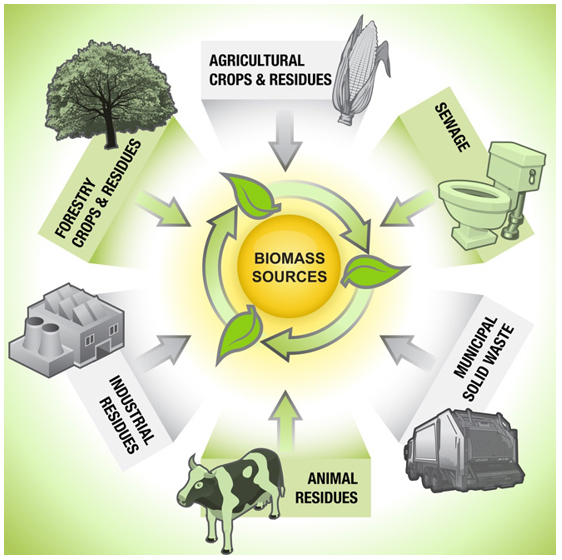An Introduction to Biomass Energy
Biomass is the material derived from plants that use sunlight to grow which include plant and animal material such as wood from forests, material left over from agricultural and forestry processes, and organic industrial, human and animal wastes. Biomass comes from a variety of sources which include:
- Wood from natural forests and woodlands
- Forestry plantations
- Forestry plantations
- Forestry residues
- Agricultural residues such as straw, stover, cane trash and green agricultural wastes
- Agro-industrial wastes, such as sugarcane bagasse and rice husk
- Animal wastes
- Industrial wastes, such as black liquor from paper manufacturing
- Sewage
- Municipal solid wastes (MSW)
- Food processing wastes
In nature, if biomass is left lying around on the ground it will break down over a long period of time, releasing carbon dioxide and its store of energy slowly. By burning biomass its store of energy is released quickly and often in a useful way. So converting biomass into useful energy imitates the natural processes but at a faster rate.
Biomass can be transformed into clean energy and/or fuels by a variety of technologies, ranging from conventional combustion process to emerging biofuels technology. Besides recovery of substantial energy, these technologies can lead to a substantial reduction in the overall waste quantities requiring final disposal, which can be better managed for safe disposal in a controlled manner while meeting the pollution control standards.
Biomass waste-to-energy conversion reduces greenhouse gas emissions in two ways. Heat and electrical energy is generated which reduces the dependence on power plants based on fossil fuels. The greenhouse gas emissions are significantly reduced by preventing methane emissions from landfills. Moreover, biomass energy plants are highly efficient in harnessing the untapped sources of energy from biomass resources.
